Natural Yeast Sourdough Starter Tutorial
I’m going to teach you how to make homemade natural yeast from wheat; also known as a sourdough starter. Natural yeast is made by capturing wild yeast from the environment. I know, sounds pretty cool – and it is!
Related: Roasted Garlic Sourdough Bread
Related: How to Fix a Bad Sourdough Starter
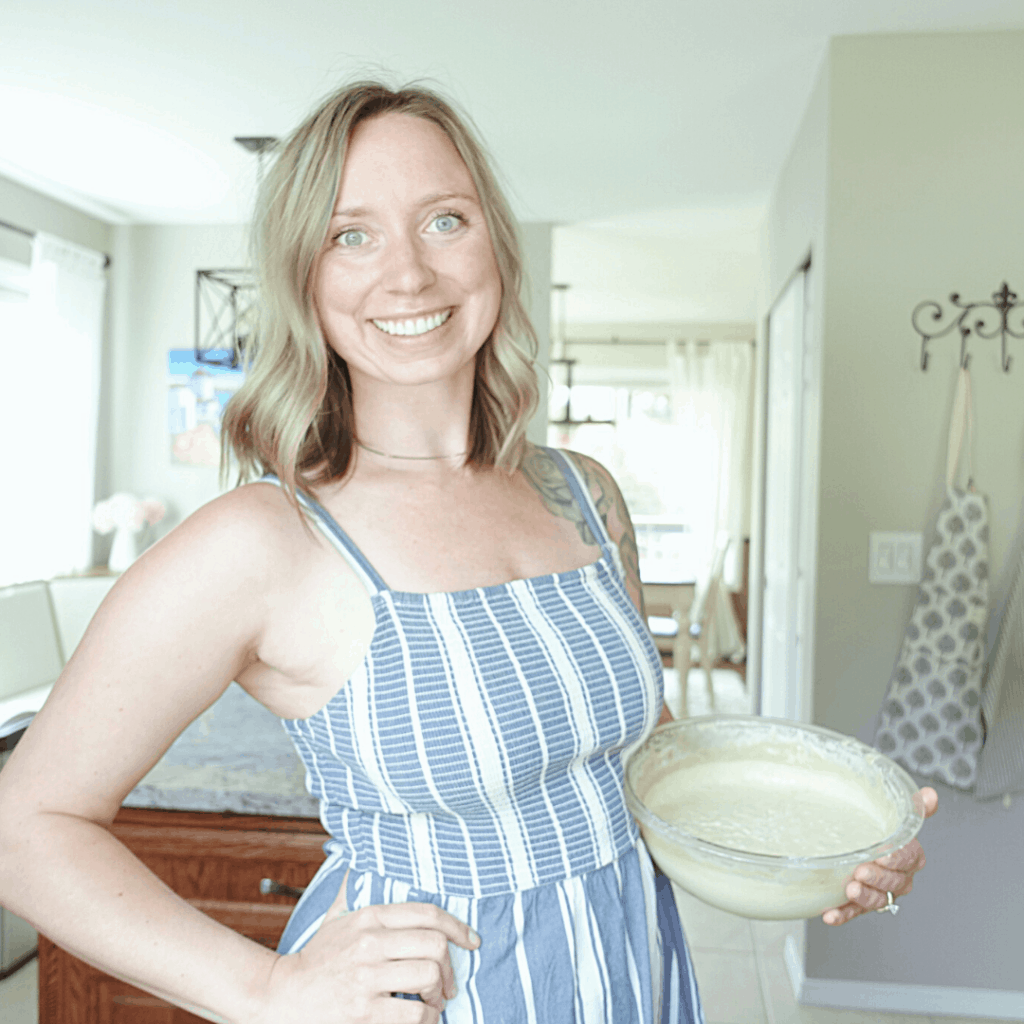
- what is a natural yeast sourdough starter
- best flour for making Natural Yeast
- Why use einkorn flour for making natural yeast
- how long does it take to make Natural yeast
- how to do the sourdough starter float test
- Natural yeast sourdough starter troubleshooting
- Is my natural yeast sourdough starter dead?
- benefits of a natural yeast sourdough starter
- why is natural yeast healthy
- how to make a natural yeast sourdough starter
- Do I have to use filtered water for making natural yeast
- do I have to use glass for making natural yeast
- how to maintain a natural yeast sourdough starter
- how to feed an established natural yeast sourdough starter
- what to make with natural yeast
- Shop this post
- pin it for later – Natural Yeast sourdough starter
- Print the recipe – Natural Yeast Sourdough Starter
- Natural Yeast Sourdough Starter
- Do i have to use filtered water for making natural yeast
- do I have to use glass for making natural yeast
- how to maintain a natural yeast sourdough starter
- how to feed an established natural yeast sourdough starter
- about me
what is a natural yeast sourdough starter
A sourdough starter is a form of natural yeast and is an alternative to using a packet of commercial yeast for making bread. It’s a combination of water and flour fermented on the counter as it captures wild yeast from its environment.
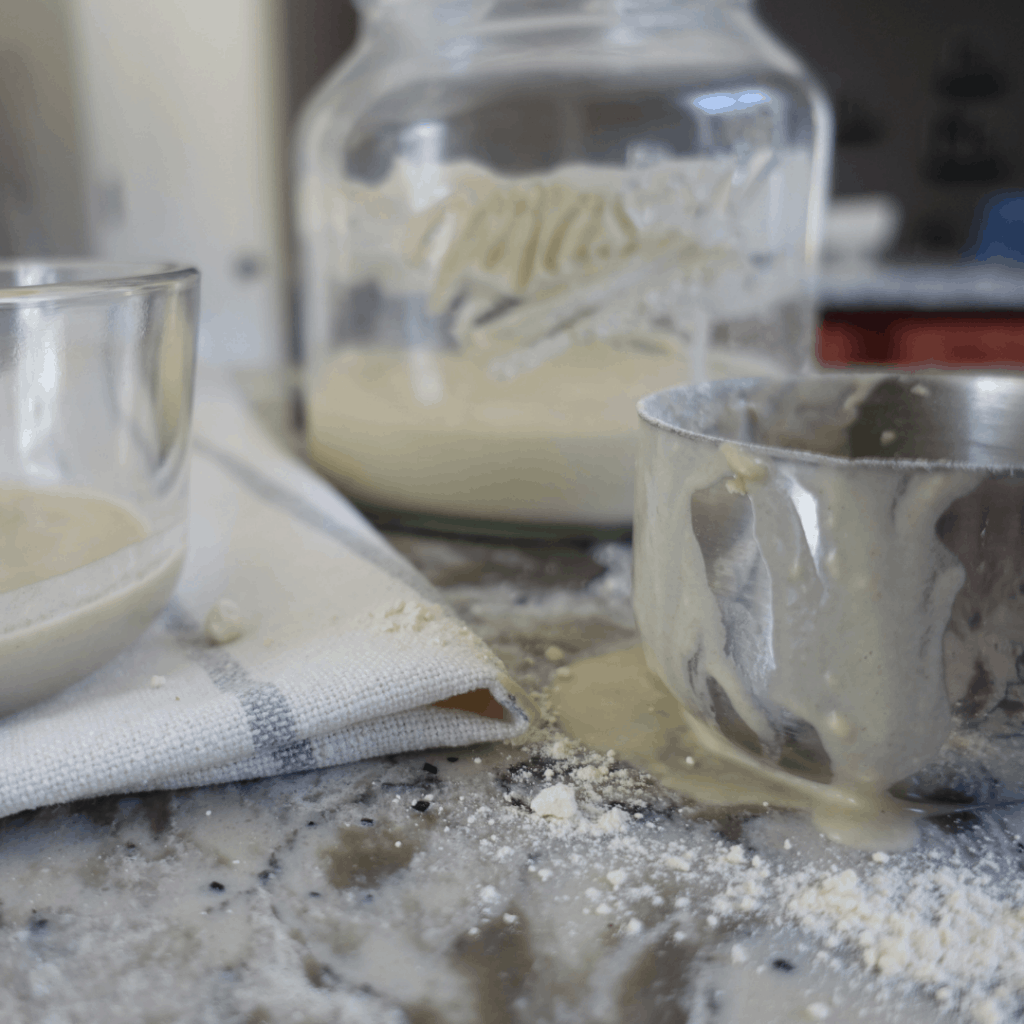
best flour for making Natural Yeast
The beauty of a natural yeast sourdough starter is how versatile and resilient it is. You can pretty much use any kind of flour you want for your starter and it will capture wild yeast (meaning, it’ll get bubbly and ferment) under the right conditions.
Related: traditional cooking guide for beginners
Why use einkorn flour for making natural yeast
The reason einkorn flour is so great is simply that it’s more easily digestible. It’s actually the most ancient wheat there is and the only wheat that hasn’t been touched by hybridization. Einkorn flour provides you with tons of micronutrients like iron, fiber, b vitamins, and many other trace minerals; it also serves as a good source of the macronutrient – protein.
Related: Learn how to make einkorn sourdough tortillas
how long does it take to make Natural yeast
It takes about 1 week to make a bubbly sourdough starter that you can use to make various sourdough recipes. However, if you want to make a loaf of sourdough bread with a good rise, you’ll want to wait for your sourdough starter to mature for about 3 weeks(ish). A mature sourdough starter is one that has been frequently fed and passes the float test.
how to do the sourdough starter float test
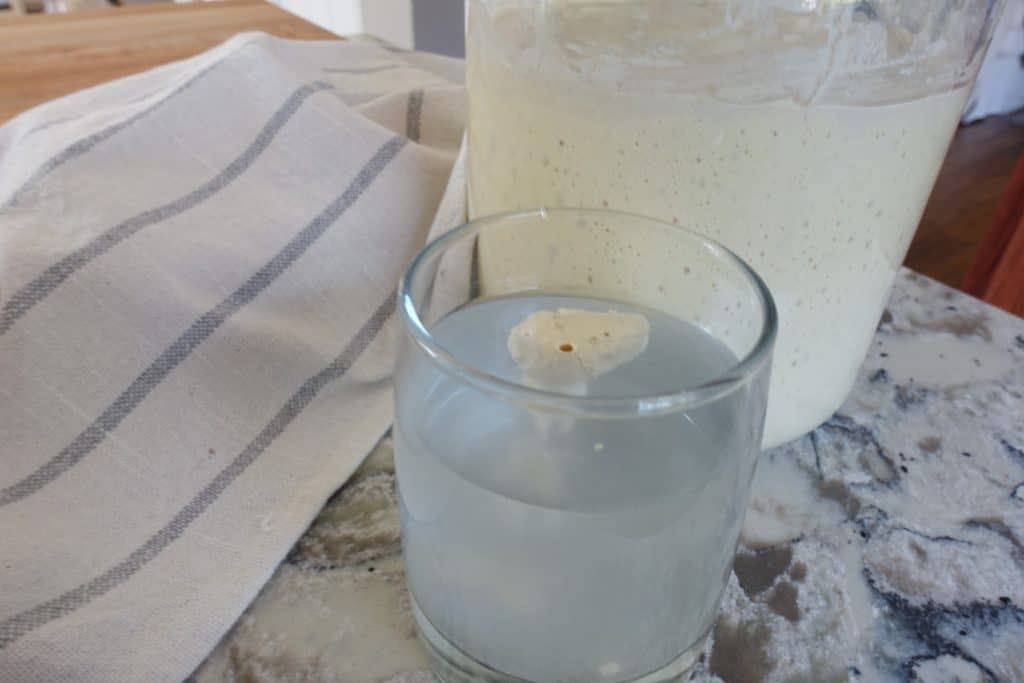
Take a small dollop of your starter after it’s been fed and is active and bubbly, drop it into a glass of water, and if it floats you’ll probably get a good rise out of your sourdough bread. If it sinks, you’ll want to either wait for it to mature, or do some sourdough starter troubleshooting.
Related: 23 Reasons Your Sourdough Bread is Dense
Natural yeast sourdough starter troubleshooting
If you find that you’re having lots of issues with your sourdough recipes, your starter might just need a bit of troubleshooting. My biggest piece of advice is NOT to throw away your starter! My starter has been through the wringer, and so many times I thought it was dead when really it just needed some good TLC and it was back to life.
Is my natural yeast sourdough starter dead?
My sourdough starter smells like alcohol
You might notice a smell similar to alcohol – this doesn’t mean your sourdough starter is toast (pun not intended); it just means she’s hungry! So, feed your sourdough starter and it’ll be back to smelling nice and sour within a few feedings.
my starter has a crust
You might notice a crust on the top of your natural yeast sourdough starter – this just means it needs to be stirred more frequently. Depending on the time of year and how warm you keep your house, you might need to stir your starter every 12 hours. Or just keep it in the fridge if you aren’t going to use it for a couple of days. Also, you could keep a damp tea towel over it and that’ll prevent the crust from forming.
what’s this black liquid on my starter?
Sometimes a black liquid forms on the top of your natural yeast sourdough starter – this is also normal and it’s called hooch (hence my starter’s name, Hoochy Mama). It just means she’s hungry. You’ll notice the trend here is that your starter will often do weird things when she’s hungry – so when all else fails – feed her! That’s kind of the rulebook for me, too. 😉
Related: How to Revive a Bad Sourdough Starter
benefits of a natural yeast sourdough starter
Having a natural yeast sourdough starter of your own can seriously open you up to so many options in the kitchen. You will be able to make homemade bread, English muffins, pancakes, waffles, bagels, pot pies, biscuits, pastries, cookies, cakes, and tons of other recipes.
why is natural yeast healthy
- Homemade natural yeast is healthy because it’s more easily digestible. The long fermentation process eliminates much of the antinutrient, phytic acid, which is found on grains. Phytic acid is the main culprit for why many people have a hard time digesting grains.
- By long fermenting grains, the vitamins and nutrients become more abundant and easily accessible to your body.
how to make a natural yeast sourdough starter
The process for making your sourdough starter is actually very easy and has very little hands-on time.
Step 1 – Gather Supplies
Gather up some flour (of any variety – I prefer einkorn flour), filtered water, a rubber spatula or wooden spoon, a tea towel, and a glass bowl/container.
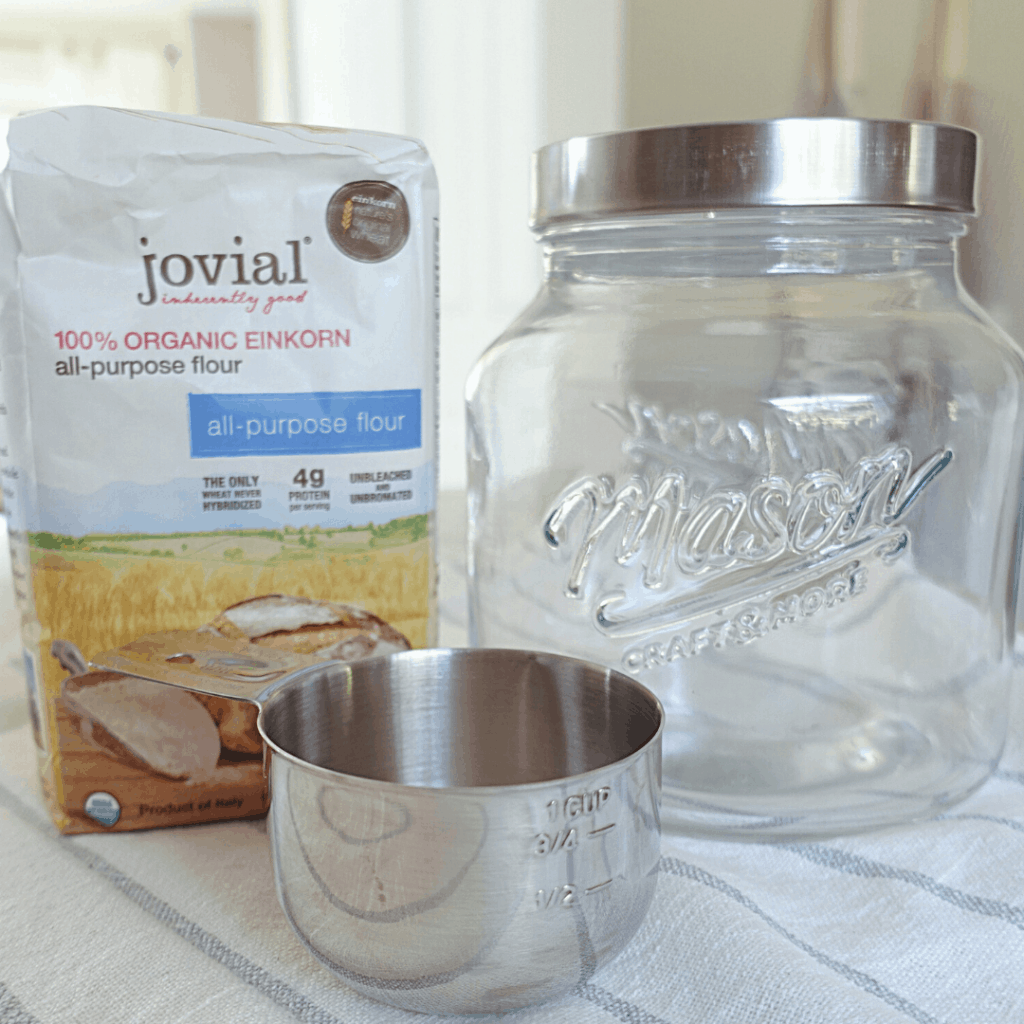
Step 2 – mix it up
Day 1
Combine 1 cup flour, 1 cup water, and leave on the counter with a tea towel over top for 24 hours.
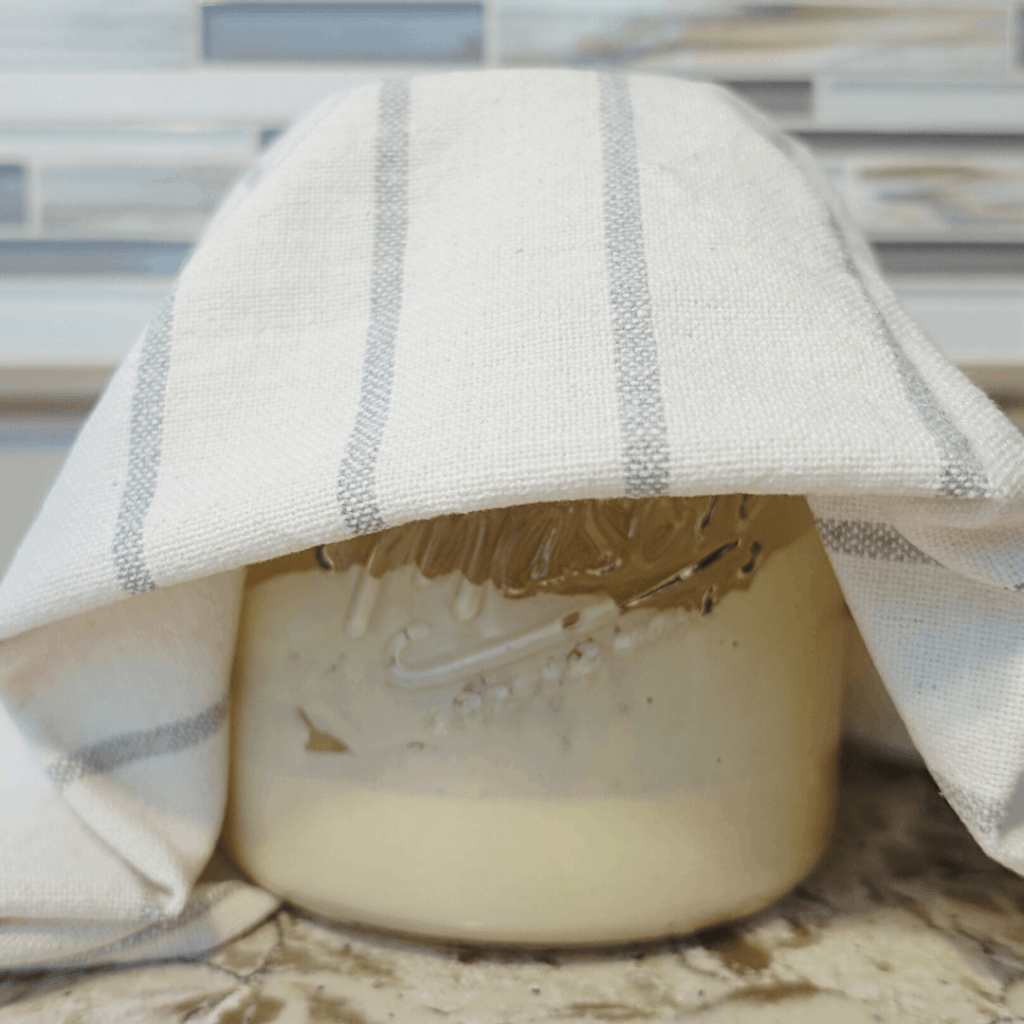
Day 2
Same as day 1. Except for this time, you’re going to discard half of your starter prior to mixing your flour and water. Then, combine 1 cup flour, 1 cup water and leave on counter with a tea towel over top for 24 hours.
Note: if you don’t see bubbles yet, go ahead and just leave for another 24 hours. Don’t worry, all is not lost – your starter might just need a little more time to develop that good bacteria and yeast.
Note on your discard: you can toss this, or save it (just put it in a glass container in the fridge) and use it for sourdough discard recipes. These are recipes that don’t need a lot of rise, thus, not a lot of yeast needs to be present in your starter.
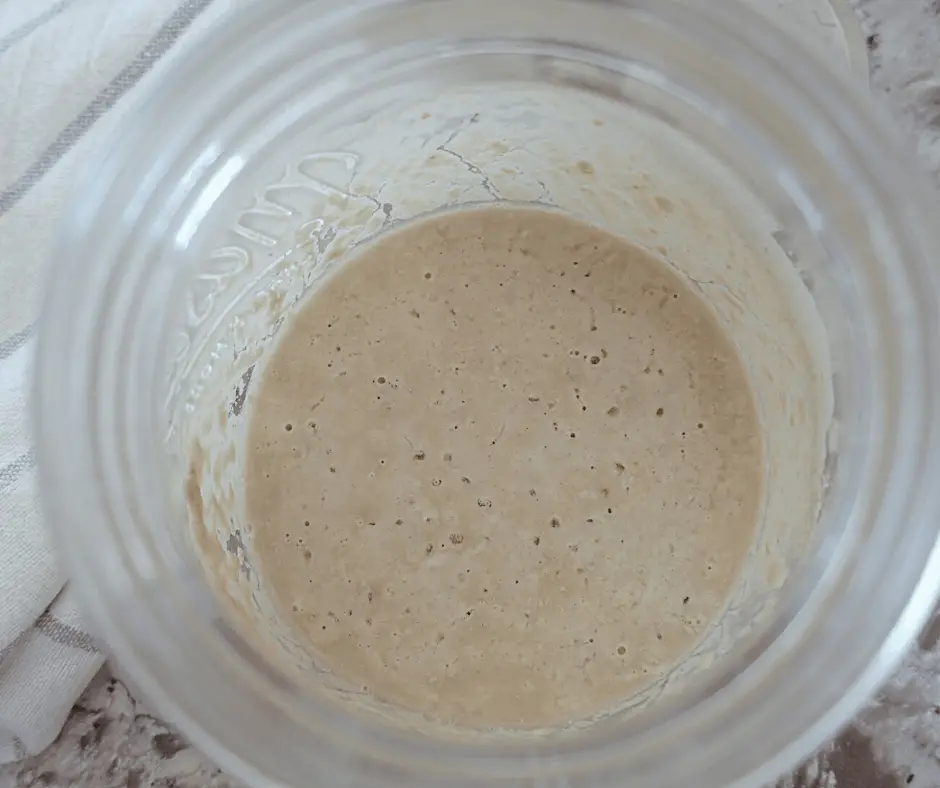
Day 3
Same as days 1 & 2. Discard half. Combine 1 cup flour, 1 cup water, and leave on the counter with a tea towel over top for 24 hours.
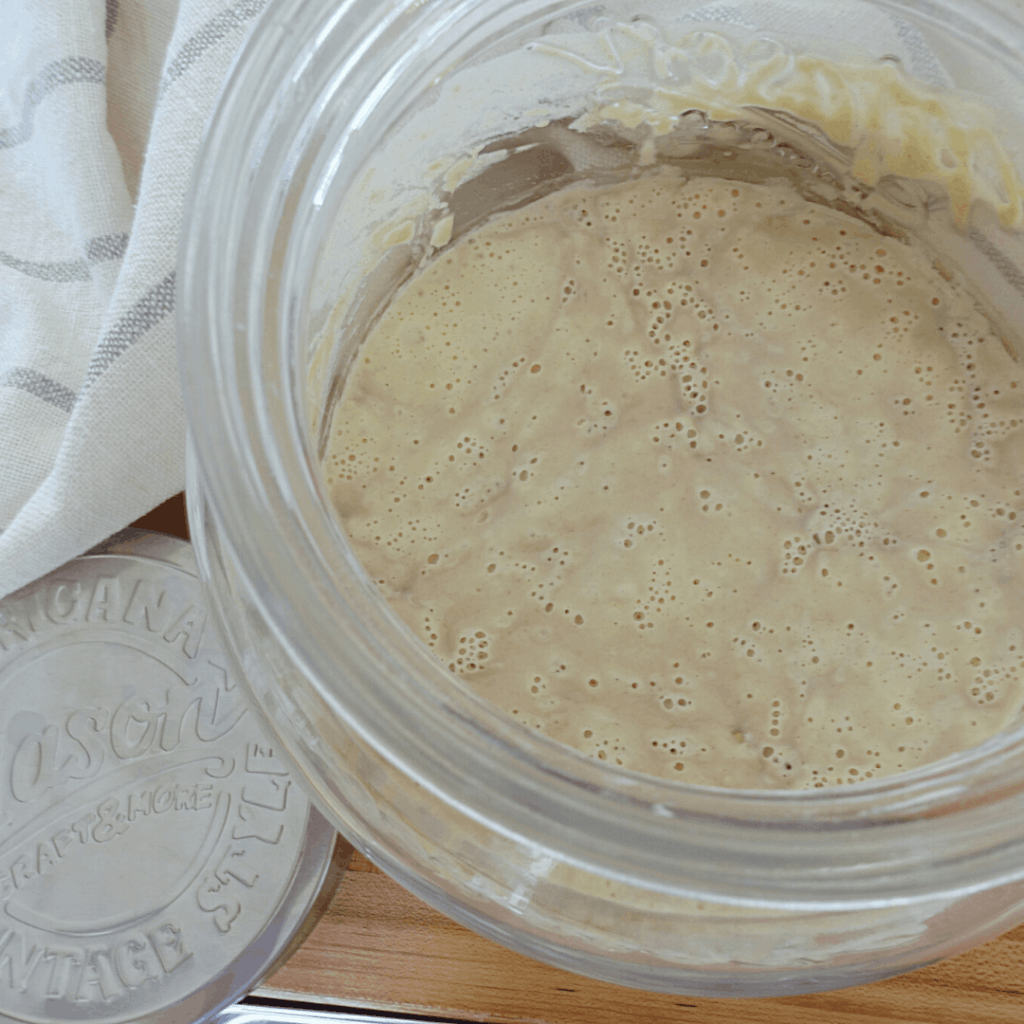
Day 4
Same as days 1-3. Discard half. Combine 1 cup flour, 1 cup water, and leave on the counter with a tea towel over top for 24 hours.
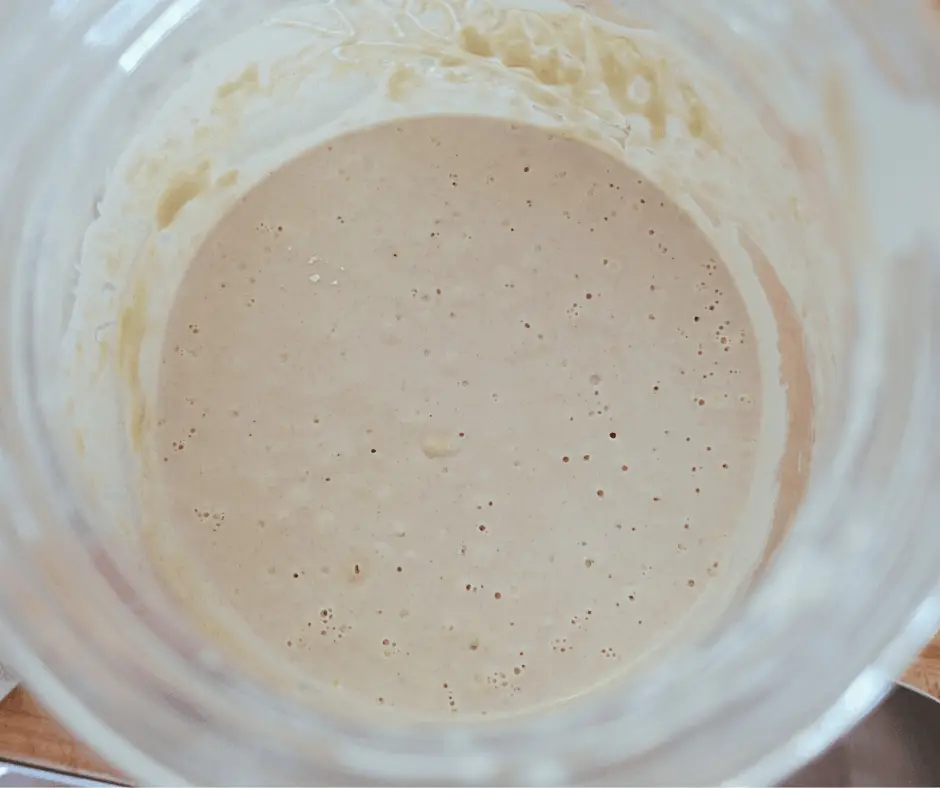
Day 5
Same as days 1-4. Discard half. Combine 1 cup flour, 1 cup water, and leave on the counter with a tea towel over top for 24 hours.
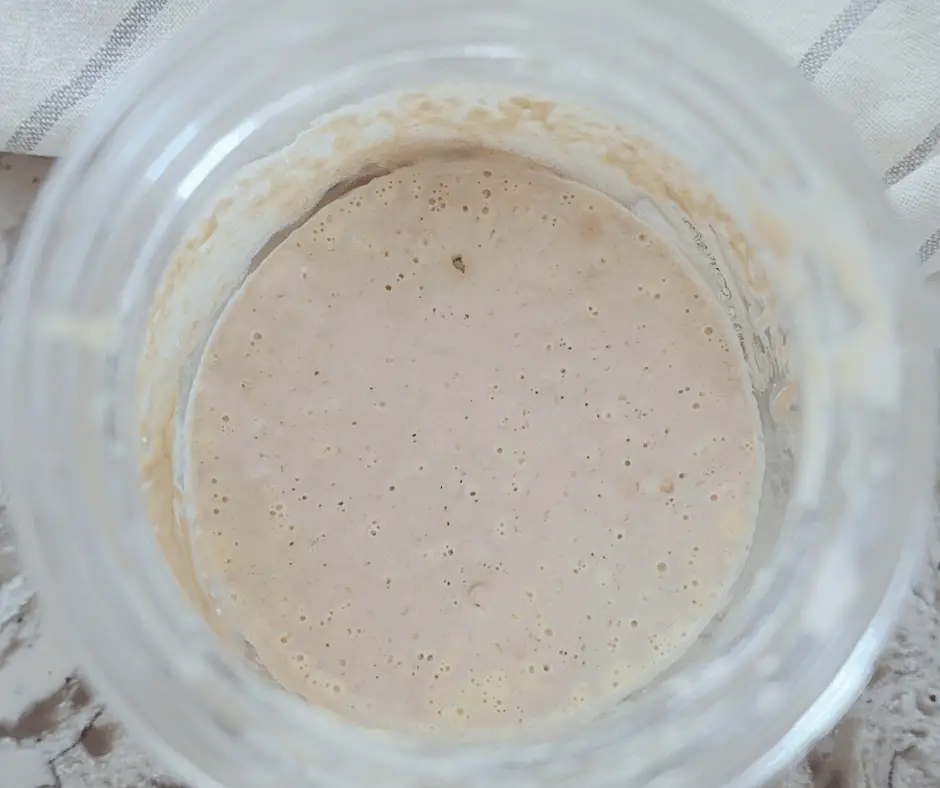
Day 6
A little different. Discard half. Combine 1 cup flour, 1 cup water, and leave on the counter with a tea towel over top for 12 hours (not 24). Then feed again after that 12 hours.

Day 7
Same as day 6. Discard half. Combine 1 cup flour, 1 cup water and leave on the counter for 12 hours (not 24). Then feed again after that 12 hours.
At this point, your starter is probably mature enough to make pancakes, English muffins, and other sourdough recipes. I would wait a couple more weeks though to make a full loaf of sourdough bread just to give it a little more time to mature.
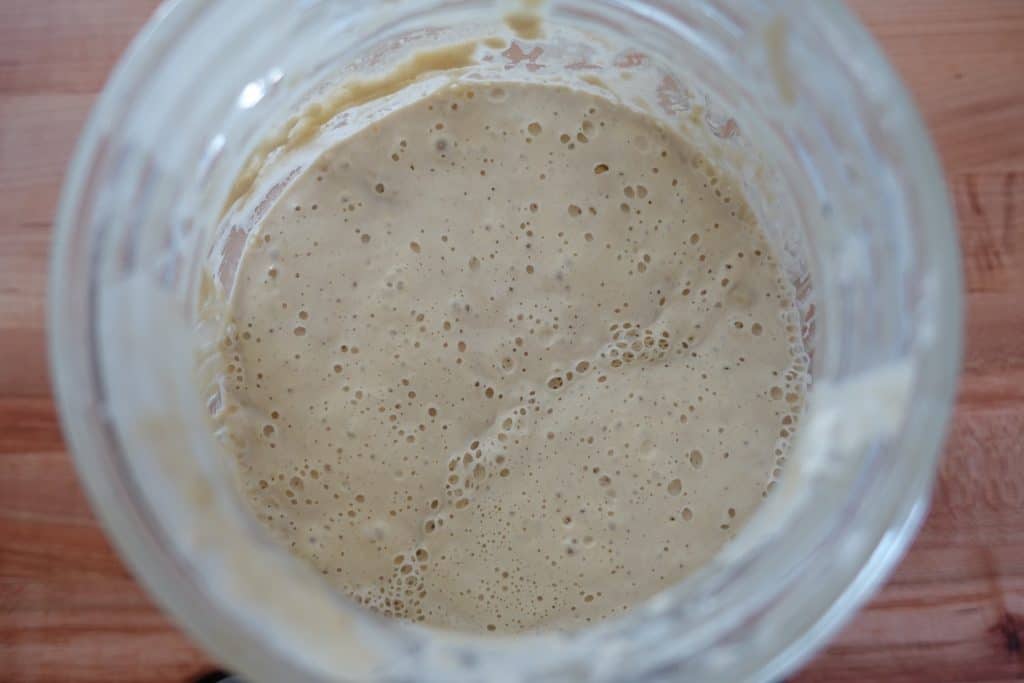
Do I have to use filtered water for making natural yeast
Yes. There should be no chlorine or other chemicals and contaminants in your water. Highly filtered water is important for the integrity of the ferment. I use my Berkey filtered water to feed my starter.
If you don’t have access to filtered water, no worries. You can leave a glass of tap water out on the counter for about 12-24 hours and the chlorine will evaporate out of it. However, this adds another step to your starter process, so I’d just find some filtered water!
do I have to use glass for making natural yeast
Use any non-reactive container for making a natural yeast sourdough starter. Glass or ceramic work great, just not metal. If you use a metal bowl the metal will compromise the fermentation process. The same goes for what you use to stir your starter – make sure you don’t use a whisk.
Related: Bread-Making Kitchen Essentials Checklist
how to maintain a natural yeast sourdough starter
How often you maintain your sourdough starter depends on how often you use it. If you use it every day or every couple of days, you’ll just leave it on the counter and feed it daily. If you use your starter only about once or twice a week, you can leave it in the fridge between uses and feed 1-2 times a week.
You’ll also want to change the container you keep your starter in every few weeks (or when it gets crusty). To prevent having to do this too often, make sure you scrape down the sides with your rubber spatula after each use/feeding.
how to feed an established natural yeast sourdough starter
Feed your starter equal parts starter, flour, and water. Meaning, if you have one cup of starter, feed it one cup of flour and one cup of water. I use einkorn flour but you can use whatever you prefer.
The night before (or even sometimes just several hours before) you want to make something with your sourdough starter is when you’ll want to feed it. Stir it up using a wooden spoon or rubber spatula. Put a tea towel over it and let it sit on the counter. You won’t need to discard anything because your discard is whatever sourdough treat you’re making!
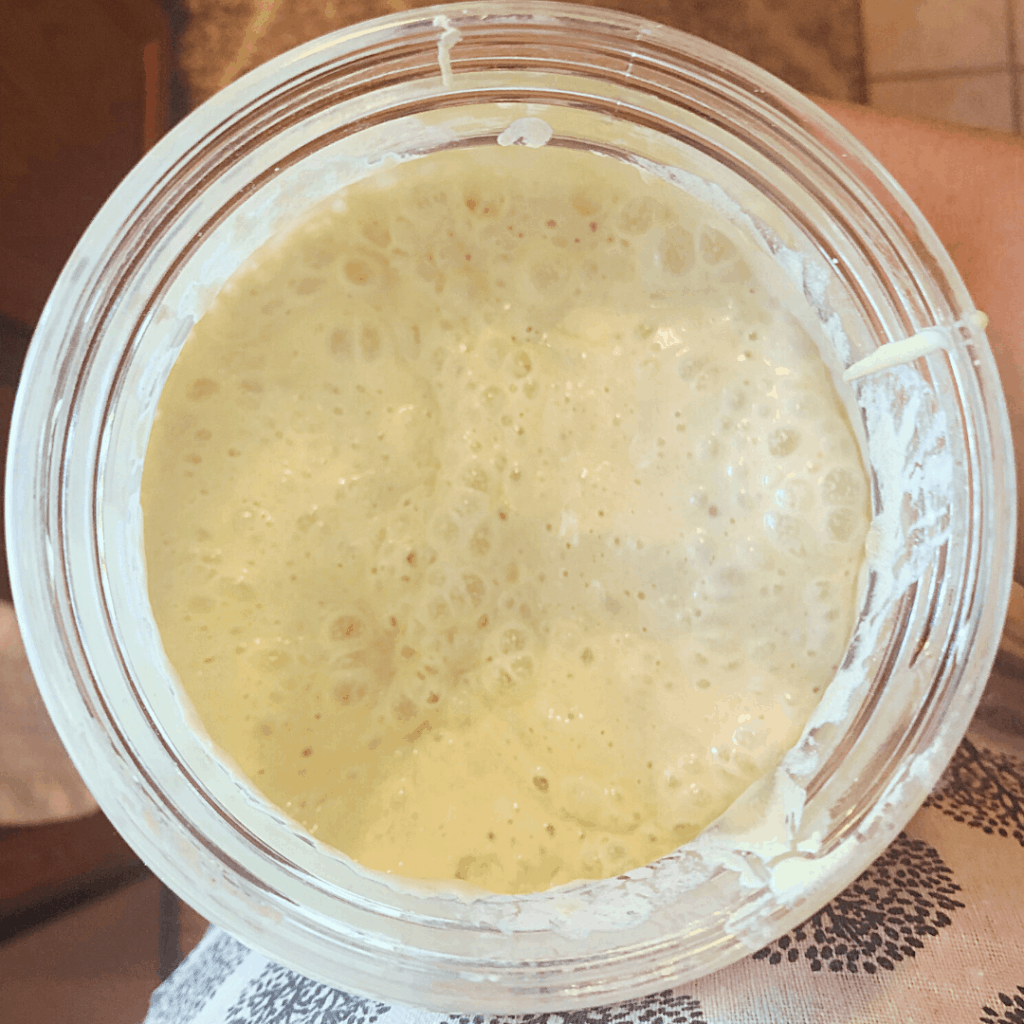
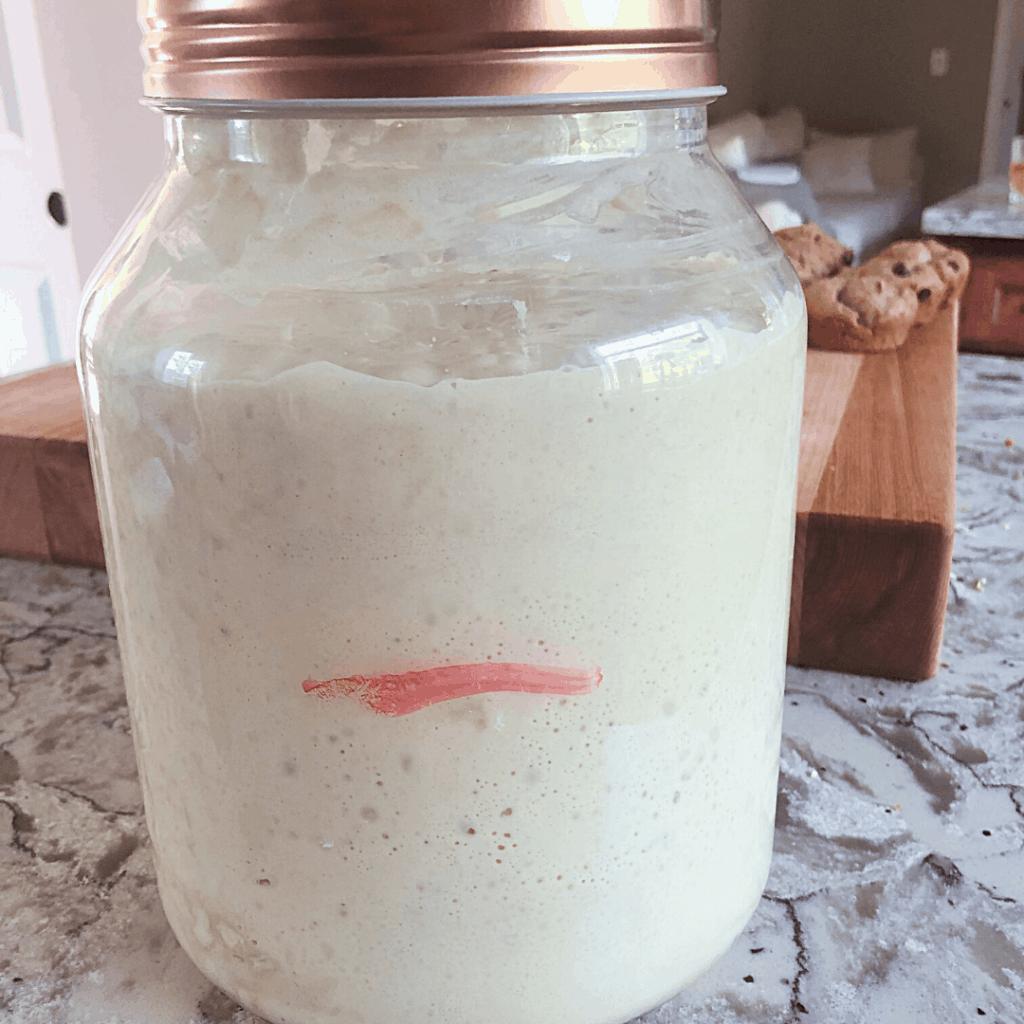
what to make with natural yeast
Roasted Garlic Sourdough Bread
Pumpkin Sourdough Cinnamon Rolls
Long Fermented Sourdough Donuts
Shop this post
- Berkey water filter (we use the Royal because we drink an insane amount of water!)
- Thrive Market – 25% off & free gift! (where I get a ton of my ingredients)
- Azure Standard: $25 off your order. Code kyrieluke1
- Dutch oven
- Stand mixer
- Boos Block Butcher Block
- Grain Mill
- a large non-reactive bowl to combine all ingredients
pin it for later – Natural Yeast sourdough starter

Print the recipe – Natural Yeast Sourdough Starter
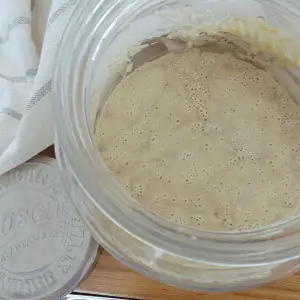
Natural Yeast Sourdough Starter
Equipment
- Medium to large glass bowl
- Rubber spatula or wooden spoon
- Tea towel
- 1 cup measuring cup
Ingredients
- 7 cups Einkorn flour you can use any flour you like
- 7 cups Filtered water make sure it's filtered
Instructions
- gather your spatula, bowl, tea towel, measuring cup, flour and water
- combine 1 cup flour, 1 cup water and leave on counter with tea towel over top for 24 hours.
- discard half of your starter prior to mixing your flour and water. Then, combine 1 cup flour, 1 cup water and leave on counter with tea towel over top for 24 hours.
- discard half. Combine 1 cup flour, 1 cup water and leave on counter with tea towel over top for 24 hours.
- discard half. Combine 1 cup flour, 1 cup water and leave on counter with tea towel over top for 24 hours.
- discard half. Combine 1 cup flour, 1 cup water and leave on counter with tea towel over top for 24 hours.
- discard half. Combine 1 cup flour, 1 cup water and leave on counter with tea towel over top for 12 hours (not 24). Then feed again after that 12 hours.
- discard half. Combine 1 cup flour, 1 cup water and leave on counter for 12 hours (not 24). Then feed again after that 12 hours.
Video
Notes
Do i have to use filtered water for making natural yeast
Yes. There should be no chlorine or other chemicals and contaminants in your water. Highly filtered water is important for the integrity of the ferment. I use my Berkey filtered water to feed my starter. If you don’t have access to filtered water, no worries. You can leave a glass of tap water out on the counter for about 12-24 hours and the chlorine will evaporate out of it. However, this adds another step to your starter process, so I’d just find some filtered water!do I have to use glass for making natural yeast
Use any non-reactive container for making a natural yeast sourdough starter. Glass or ceramic work great, just not metal. If you use a metal bowl the metal will compromise the fermentation process. The same goes for what you use to stir your starter – make sure you don’t use a whisk.how to maintain a natural yeast sourdough starter
How often you maintain your sourdough starter depends on how often you use it. If you use it every day or every couple of days, you’ll just leave it on the counter and feed it daily. If you use your starter only about once or twice a week, you can leave it in the fridge between uses and feed 1-2 times a week. You’ll also want to change the container you keep your starter in every few weeks (or when it gets crusty). To prevent having to do this too often, make sure you scrape down the sides with your rubber spatula after each use/feeding.how to feed an established natural yeast sourdough starter
Feed your starter equal parts starter, flour, and water. Meaning, if you have one cup of starter, feed it one cup of flour and one cup of water. I use einkorn flour but you can use whatever you prefer. The night before (or even sometimes just several hours before) you want to make something with your sourdough starter is when you’ll want to feed it. Stir it up using a wooden spoon or rubber spatula. Put a tea towel over it and let it sit on the counter. You won’t need to discard anything because your discard is whatever sourdough treat you’re making!about me
Read more about me, my family and our healthfully rooted home here.


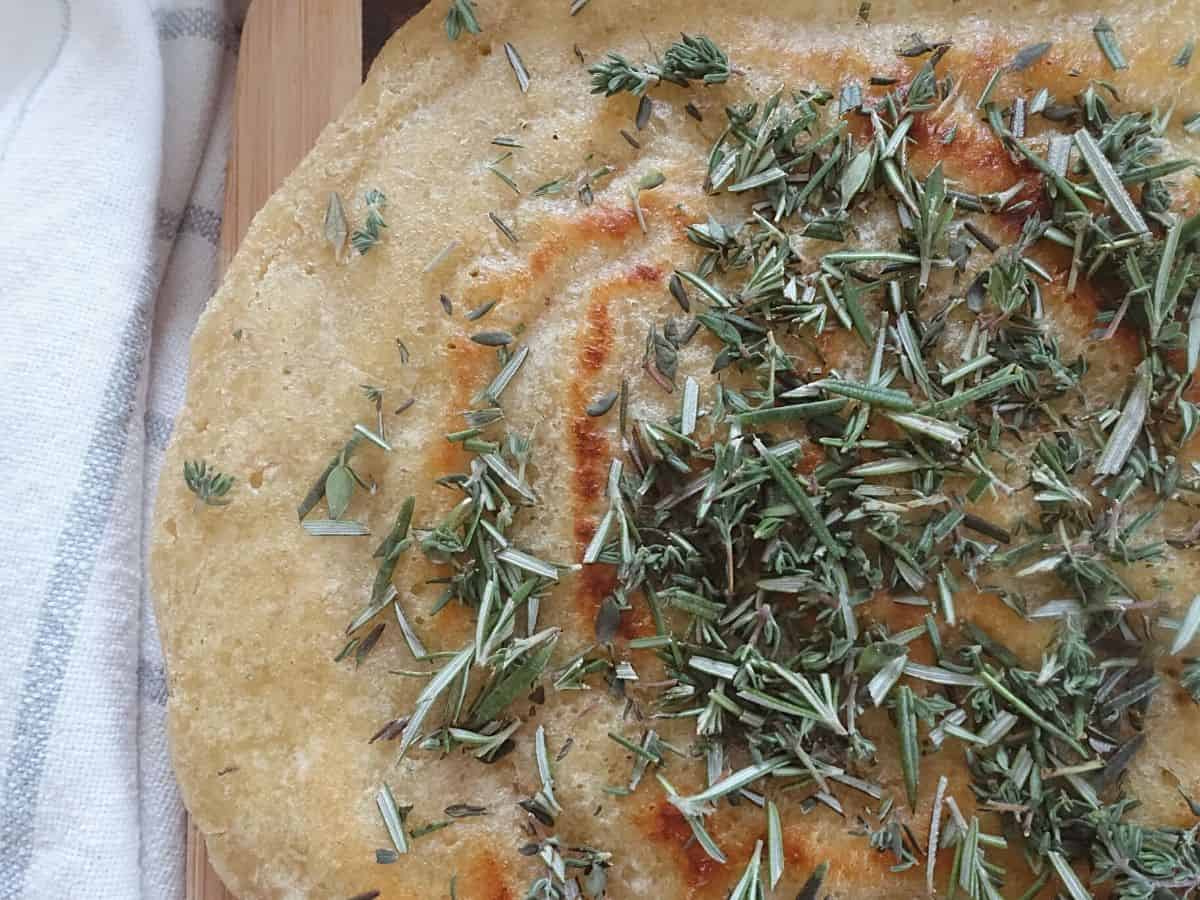
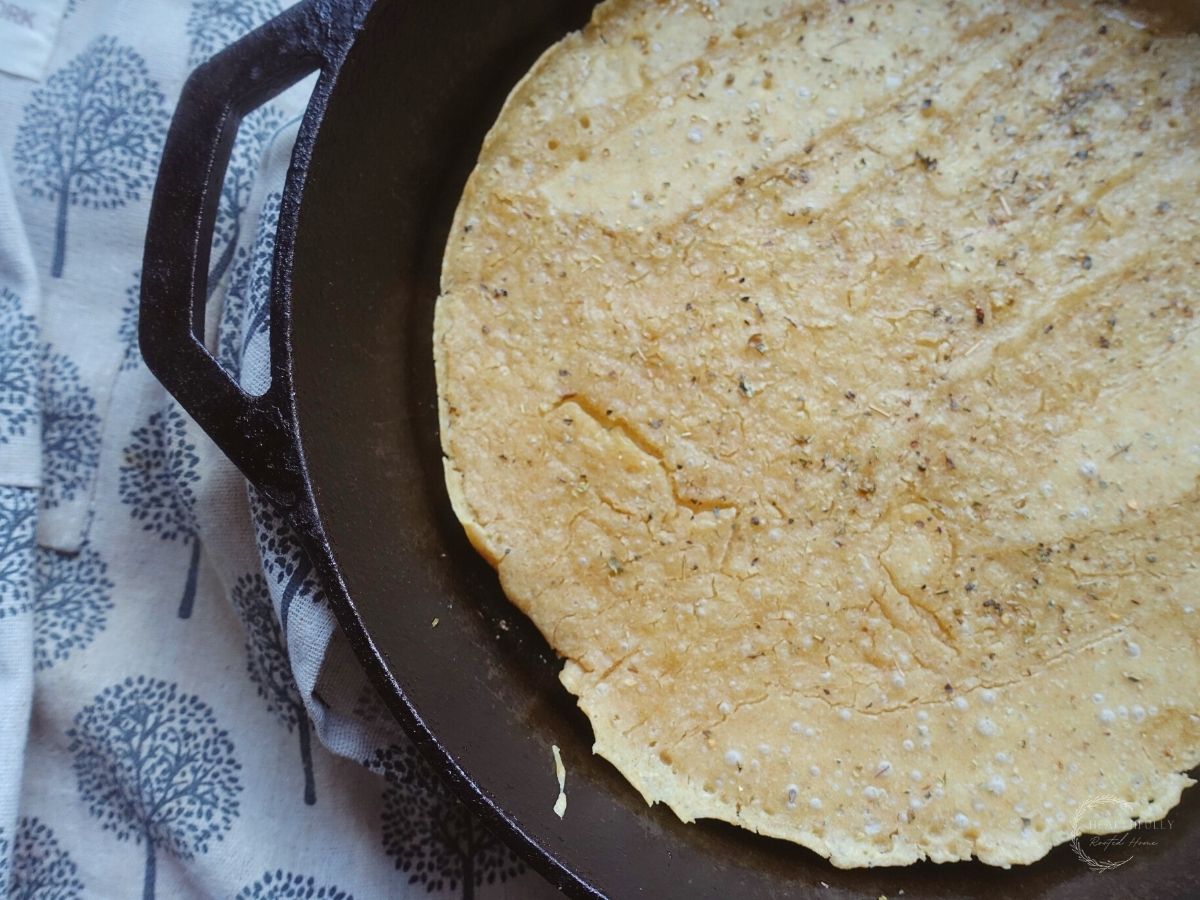
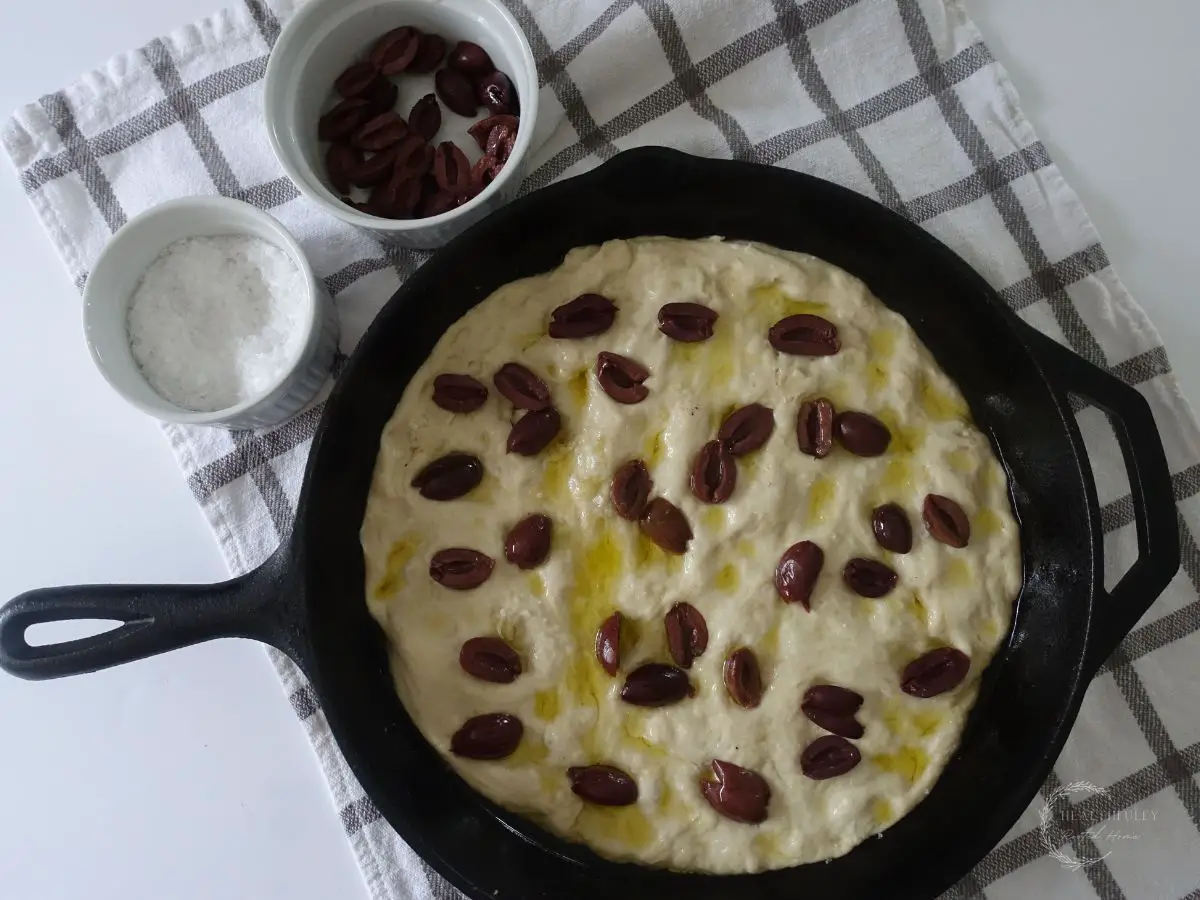
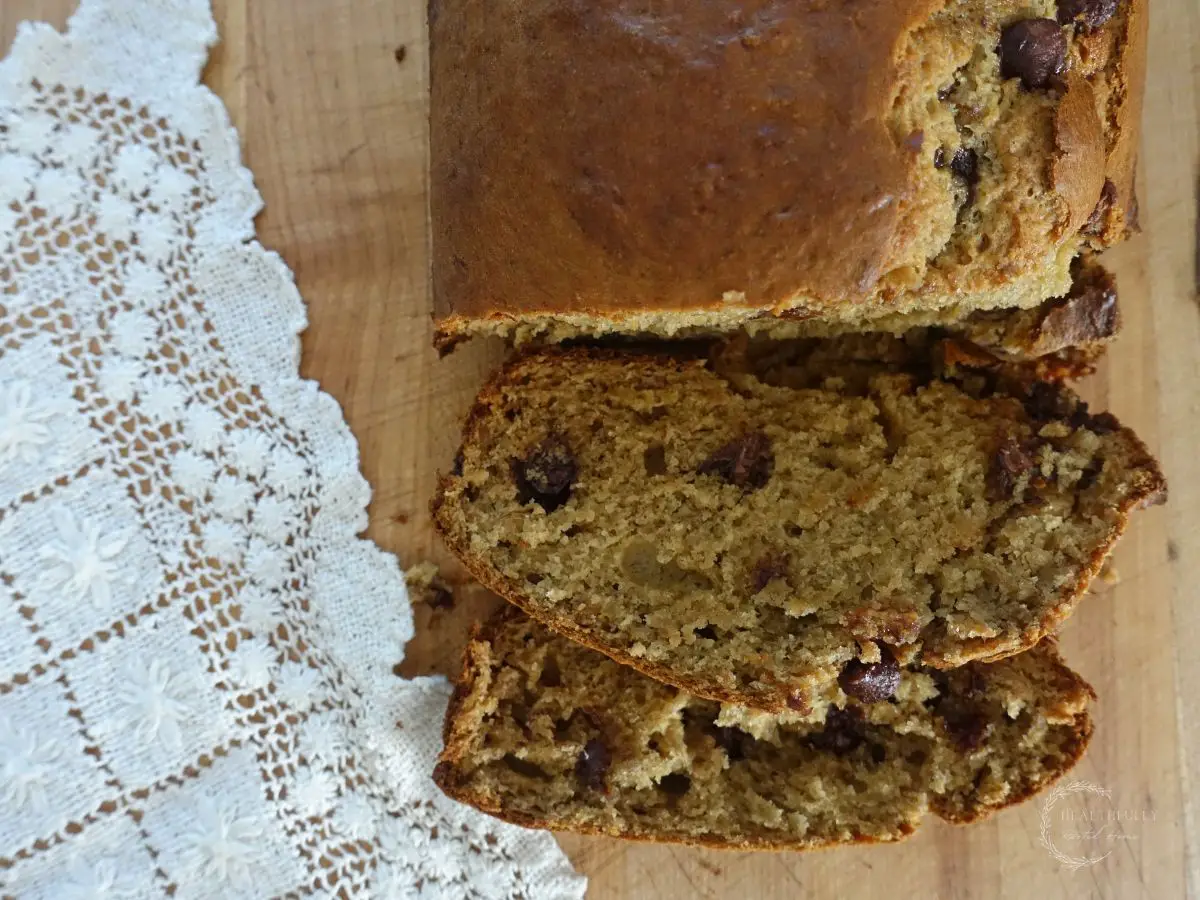

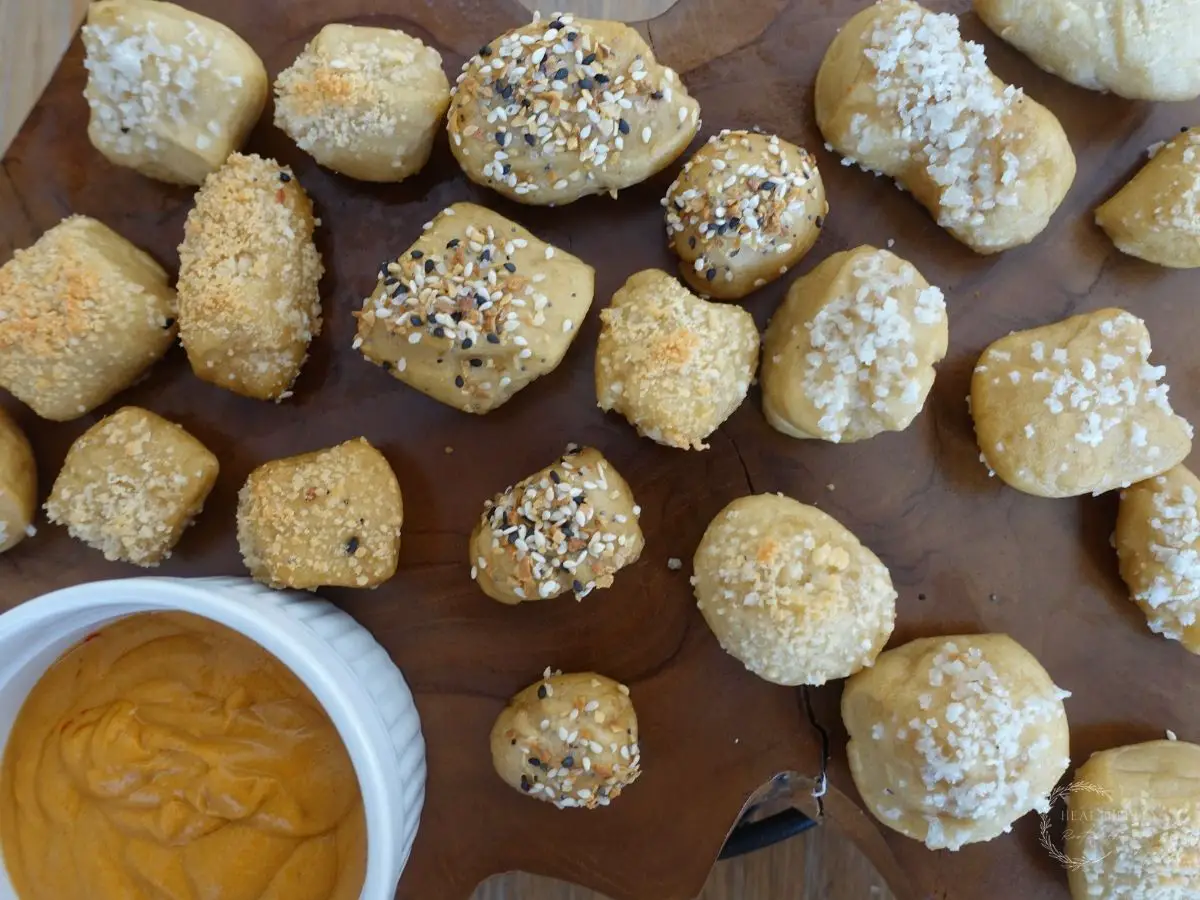
Hello! I started my ferment on July 28th and on the first day it took my preferment about 30 hours to double in size. Now it’s the second day and it doubles and triples super quickly, way before the 24 hours. Is it normal to do that? I live in Belize, a very tropical country so I am not sure what I should do. Should I let it continue rise until the 24 hours have passed to feed it again? I had to switch containers because in just 1 hour of feeding it, it had already risen so much that I had to put it in a bigger container
So I realized I am exaggerating when I say doubles in size but what I meant is that it rises super quickly to the point where it touches the container’s cover
Hi Cassie, yes, move to a larger container. Also if it’s doubling that fast that is great! It’s a sign of a healthy starter. Your hot and humid environment can be contributing to this for sure.
You will want to start discarding some of your starter before feeding again since it’s already rising. So skip to the day 6 and 7 instructions. Make some super yummy sourdough discard recipes! 🙂 I love my flatbread recipe, or any of my sourdough muffin recipes for this.
Great work!
I am on day 19 and my starter has only doubled twice (about a week ago). I didn’t see any troubleshooting around this but would love any suggestions. I went back to feeding it once a day because I can’t maintain the twice a day feedings currently and they didn’t seem to make a difference. I have had great bubbles from the beginning and it smells like sourdough, but I’m just not getting any rise. I have it on a heating pad – started that about day 10 because our house is cooler. Any suggestions?
Hi Danielle!
Thanks for writing. So by day 19 you shouldn’t need to do twice a day feedings anymore. Once a day feedings are fine after the initial 7 days is up. Even once every couple days is totally fine! You can leave your starter in the fridge for extended periods of time too.
Have you done the float test on your starter? If it has good bubbles I’m assuming it’s pretty active. The float test will tell you if it’s ready to make something that requires a rise (ie. sourdough loaf).
Other than that, if you’re feeding your starter equal parts flour, water, & starter then you may just have to wait for your starter to mature longer in order for it to increase in volume. It’ll come in time!
Have you made anything with it? How did it turn out?
Please let me know your questions and how you like this recipe!
This post was super helpful. I feel super confident now to try my hand at making a sour dough starter again. All possible questions are answered. Great post!
Hi Sarah, I’m so glad this was helpful for you. 🙂